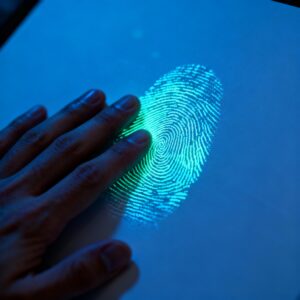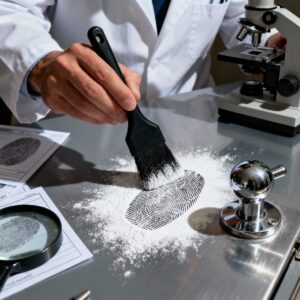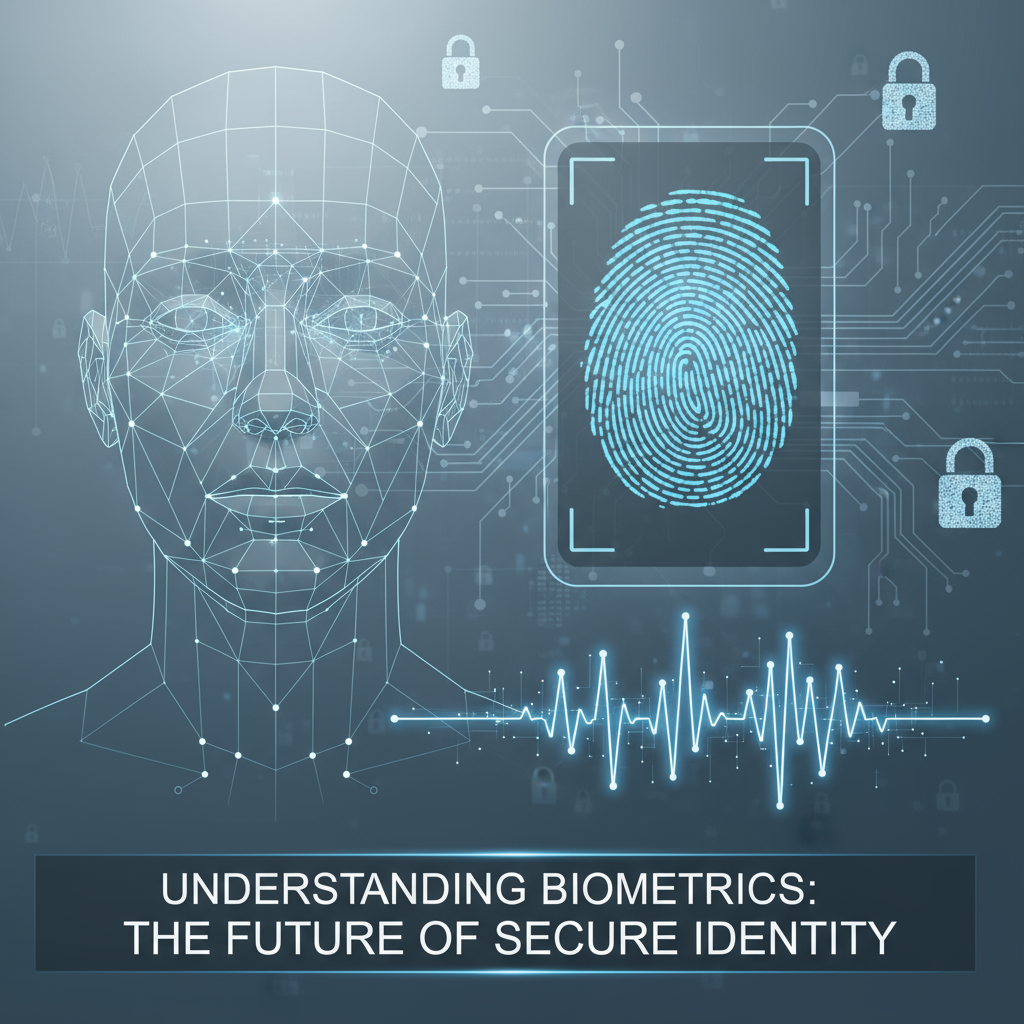Summary
Fingerprints and palm prints have long been cornerstones of forensic science, enabling law enforcement agencies to identify suspects, connect crime scenes, and solve cases that might otherwise go cold. While fingerprints have been used for over a century, modern biometric technology has brought latent palm prints into the investigative spotlight. This article explores what is latent fingerprint, the latent fingerprint definition forensics, and how palm print databases like the FBI’s National Palm Print System (NPPS) are transforming crime-solving. From understanding how latent prints form to capturing them accurately, this comprehensive guide gives police officers and forensic professionals the insights they need to master the science of prints.
In the world of criminal investigations, a single fingerprint can be the key that unlocks a mystery. From burglary to homicide, fingerprints and palm prints serve as silent witnesses, helping law enforcement agencies connect suspects to crime scenes and victims. For over a hundred years, fingerprint identification has been a trusted method in forensics, proving that no two individuals share identical ridge patterns.
However, as technology has evolved, so has the ability to analyze more complex biometric evidence—especially latent prints. Today, investigators rely not just on fingerprints but also on latent palm prints, which can offer even greater detail and accuracy due to their larger surface area. Understanding what latent prints are and how to capture them correctly can make all the difference in solving a case.
What is Fingerprints and Latent Prints

A. What Are Fingerprints?
Fingerprints are the unique ridge patterns found on the tips of a person’s fingers. These ridges, formed before birth, remain unchanged throughout a person’s life. In forensic investigations, fingerprints are used to determine identity, link suspects to specific crimes, and build comprehensive criminal records.
Fingerprints are critical in nearly every phase of the justice process. They help:
- Identify potential suspects,
- Link separate crime scenes involving the same individual,
- Track prior arrests and convictions, and
- Assist in sentencing, probation, and parole decisions.
B. What Are Latent Prints?
So, what is latent fingerprint and what are latent prints exactly?
In forensic science, a latent fingerprint definition forensics refers to a fingerprint that is invisible to the naked eye. It forms when natural oils, sweat, and amino acids from the skin are transferred to a surface through touch. These prints are often hidden and require specialized techniques to detect and develop.
In simple terms, latent prints are invisible impressions left behind when someone touches an object. They may be faint, partial, or distorted, but with proper processing, they can yield a wealth of forensic information.
Latent prints definition forensics:
A latent fingerprint is an impression left by the friction ridge skin that is not immediately visible and must be developed through physical or chemical methods to be analyzed for identification.
Read More: Benefits of Rapid Fingerprinting for Law Enforcement Agencies
Collecting and Processing Latent Prints

A. Methods of Detection and Collection
Collecting a latent fingerprint requires patience, precision, and the right tools. The most common method involves dusting smooth, nonporous surfaces (like glass or metal) with fingerprint powder. When powder adheres to the oily residue, the print becomes visible and can be photographed or lifted using adhesive tape.
Other advanced methods include:
- Chemical processing: Using reagents like ninhydrin or cyanoacrylate (superglue fuming) to develop prints on porous materials such as paper or cardboard.
- Alternate light sources: UV or laser light can reveal latent prints invisible under normal lighting conditions.
- Digital scanning: High-resolution biometric scanners capture ridge details for storage and comparison.
B. The Role of Surface Type
The nature of the surface greatly influences the success of latent print recovery:
- Nonporous surfaces (glass, metal, plastic): Easier to recover prints as oils stay on the surface.
- Porous surfaces (paper, raw wood, cardboard): Require chemical treatment to make prints visible.
- Rough or textured surfaces: May distort ridge detail, complicating identification.
In forensics, understanding surface behavior is essential because the smoother the surface, the clearer the potential latent fingerprint.
Latent Palm Prints: The Expanding Frontier

A. Rise of Palm Print Identification
While fingerprints have always played a central role in investigations, latent palm prints have emerged as powerful complementary evidence. Studies show that up to 30% of latent prints found at crime scenes come from palms. This isn’t surprising—palms cover more surface area, offering more ridge characteristics for comparison.
A single fingerprint has around 150 unique ridge details, but a palm print can contain over 1,500. This larger dataset increases the chance of a positive match and strengthens forensic conclusions.
B. The National Palm Print System (NPPS)
To centralize palm print data, the FBI established the National Palm Print System (NPPS) in 2013 as part of the Next Generation Identification (NGI) system. The NPPS houses more than 20 million unique palm print identities and 42 million palm print images, serving as a national biometric repository.
Law enforcement agencies can submit latent palm prints from crime scenes to the NPPS, allowing automated comparisons across federal, state, local, and tribal databases. The system has helped solve countless cases, including those that were once considered cold.
C. Real-World Success Stories
- Moore, Oklahoma (2012): A homicide case was solved years later when palm prints found at the scene matched records in the NPPS.
- Las Vegas, Nevada (2016): Palm prints lifted from a bathroom windowsill identified a burglary and sexual assault suspect within 24 hours.
These cases highlight how crucial properly captured palm prints can be in delivering justice.
The Importance of Quality Capture
A. Common Capture Issues
Despite technological progress, not all palm prints submitted to the NPPS are usable. Some agencies experience enrollment rates below 80%, primarily because of:
- Poor image quality,
- Incomplete palm areas captured, or
- Lack of training during the booking process.
When palm prints are blurry, smudged, or incomplete, they cannot be matched against the Unsolved Latent File (ULF)—a massive collection of unsolved latent prints within the NGI system. This leads to missed opportunities and unsolved crimes.
B. A Fictional Example: The Cost of Poor Capture
Imagine a homicide case where a latent palm print found at the scene remains unidentified because the suspect’s palm prints were improperly captured during booking. Months later, the same suspect is arrested in another state—but because his prints were rejected from the NPPS due to poor quality, the system fails to match him to the earlier crime.
This is not just hypothetical—it mirrors real-world challenges faced by forensic professionals daily.
C. Capturing a Quality Palm Print
To ensure high-quality images:
- Use four-image or six-image capture methods to cover all palm areas.
- Always include distal images (upper finger joints) for system validation.
- Keep equipment clean and properly maintained.
- Provide training for officers capturing prints during booking.
A few extra minutes of care can mean the difference between solving a case and leaving it unsolved.
The Role of Technology in Print Identification
Modern biometric systems like AFIS (Automated Fingerprint Identification System) and AFIX Tracker have revolutionized fingerprint and palm print analysis. These systems compare ridge patterns against vast databases in seconds, delivering potential matches that forensic examiners verify manually.
The integration of fingerprints, palm prints, and ten-print records within the NGI system ensures a complete biometric identity profile for each individual. As algorithms advance, so does the precision and reliability of latent print identification.
FBI’s Support and Training Resources
The FBI continues to assist law enforcement agencies with educational resources and guidance, including:
- Palm Print Capture Guide (2019) – A comprehensive manual for correct palm imaging.
- Palm Print Capture Poster (2019) – Visual reference for practitioners.
- Recording Friction Ridges eLearning module – An online course to enhance forensic understanding.
Agencies seeking assistance can contact the FBI’s Palm Services and Analytical Team at palm_prints@leo.gov or call 304-625-2849.
Conclusion
Fingerprints and palm prints continue to be indispensable tools in modern forensic science. Understanding latent fingerprint definition forensics concepts and mastering quality capture techniques empower officers to make every print count.
A latent fingerprint—though invisible to the naked eye—can reveal the truth in an investigation when handled properly. The combination of advanced technology, national databases like the NPPS, and proper training ensures that even the faintest ridge detail can lead to justice.
Key Takeaways
- Latent prints are invisible fingerprints formed from natural skin secretions.
- Proper capture ensures inclusion in systems like NPPS and AFIS.
- Palm prints provide up to 10 times more ridge details than fingerprints.
- Training and attention during the booking process can directly impact case outcomes.
- Biometric databases are essential for linking suspects to crimes nationwide.
FAQs
What is latent fingerprint in forensics?
A latent fingerprint is an invisible impression made by the sweat and oils on the skin, left on surfaces when touched. These prints are crucial in forensic investigations for identifying suspects.
What are latent prints and why are they important?
Latent prints are hidden fingerprints or palm prints found at crime scenes. They are important because they can uniquely identify individuals and link them to specific actions or locations.
How are latent fingerprints collected?
They can be collected using powders, chemicals, or alternate light sources. The method depends on the surface type and environmental conditions.
Why are palm prints used in addition to fingerprints?
Palm prints contain more ridge detail and cover a larger surface area, increasing the likelihood of finding identifiable features at crime scenes.
What is the difference between visible and latent prints?
Visible prints are those that can be seen with the naked eye, usually made with substances like ink or blood. Latent prints are invisible and must be developed through forensic techniques.
What happens if palm prints are captured poorly?
If the quality is too low, the prints may be rejected by national databases like NPPS, reducing the chances of solving related cases.
Conclusion
Forensic identification has evolved from traditional fingerprinting to advanced biometric systems capable of recognizing even the faintest latent prints. Every print—visible or invisible—tells a story. For police officers, understanding latent fingerprint definition forensics is more than scientific knowledge; it’s an essential skill for delivering justice and uncovering the truth.
Debabrata Behera is a passionate blogger who writes about digital trends, personal growth, and practical insights, helping readers stay informed, inspired, and ready to achieve success in life.




